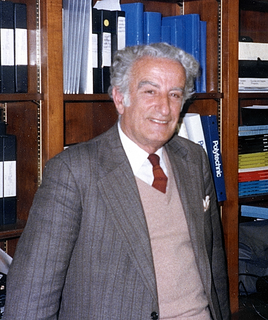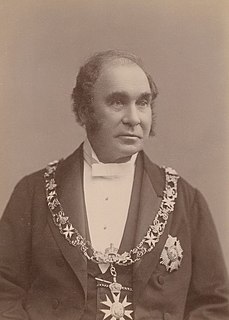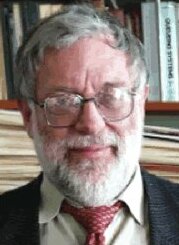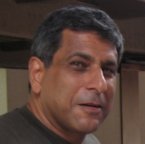Mark D. McDonnell | |
|---|---|
| Born | 28 February 1975 |
| Nationality | Australian |
| Alma mater | University of Adelaide |
| Known for | SSR |
| Scientific career | |
| Fields | Electronic Engineer and mathematician |
| Institutions | University of Adelaide University of South Australia |
| Doctoral advisor | Derek Abbott Charles E. M. Pearce |
| Other academic advisors | Nigel G. Stocks |
Mark Damian McDonnell (born 28 February 1975) is an electronic engineer and mathematician, notable for his work on stochastic resonance and more specifically suprathreshold stochastic resonance. [1]
McDonnell graduated from the Salesian College, Adelaide. [2] He received a BSc in Mathematical & Computer Sciences (1997), a BE (Hons) in Electrical & Electronic Engineering (1998), and a BSc (Hons) in Applied Mathematics (2001) all from The University of Adelaide, Australia. He received his PhD in Electrical & Electronic Engineering (2006), under Derek Abbott and Charles E. M. Pearce, also from the University of Adelaide, for a thesis entitled Theoretical Aspects of Stochastic Signal Quantisation and Suprathreshold Stochastic Resonance. [3] During the course of his PhD, he was also a visiting scholar at the University of Warwick, UK, under Nigel G. Stocks.
McDonnell worked as a research assistant in electromagnetic propagation, ice-penetrating radar, and as a computer systems engineer, at the University of Adelaide. His main research interests are in the field of nonlinear signal processing, with applications in computational neuroscience, complex systems, and lossy compression, reliable communication, and coding of noisy signals.
In 2002, McDonnell was awarded a D. R. Stranks Fellowship, and in 2003, he was awarded a Santa Fe Institute Complex Systems Fellowship, as well as the AFUW Doreen MacCarthy Bursary. In 2004 he was the recipient of an Australian Academy of Science Young Researcher's Award. He was awarded the Postgraduate Alumni University Medal for his PhD thesis. In 2007, he won a Fresh Science award, the Gertrude Rohan Prize, and an Australian Postdoctoral Fellowship that he took up at the University of South Australia.

Sir Peter Mansfield was an English physicist who was awarded the 2003 Nobel Prize in Physiology or Medicine, shared with Paul Lauterbur, for discoveries concerning Magnetic Resonance Imaging (MRI). Mansfield was a professor at the University of Nottingham.

Athanasios Papoulis was a Greek-American engineer and applied mathematician.
Stochastic resonance (SR) is a phenomenon where a signal that is normally too weak to be detected by a sensor, can be boosted by adding white noise to the signal, which contains a wide spectrum of frequencies. The frequencies in the white noise corresponding to the original signal's frequencies will resonate with each other, amplifying the original signal while not amplifying the rest of the white noise. Further, the added white noise can be enough to be detectable by the sensor, which can then filter it out to effectively detect the original, previously undetectable signal.

Sir Thomas Elder,, was a Scottish-Australian pastoralist, highly successful businessman, philanthropist, politician, race-horse owner and breeder, and public figure. Amongst many other things, he is notable for introducing camels to Australia.
Derek Abbott is a physicist and electronic engineer.

Charles Edward Miller Pearce was a New Zealand/Australian mathematician. At the time of his death on 8 June 2012 he was the Elder Professor of Mathematics at the University of Adelaide.

Ardeshir "Adi" Ratan Bulsara is a scientist in the area nonlinear dynamics. The 2007 International Conference on Applied Nonlinear Dynamics (ICAND), held in Kauai, Hawaii, was a festschrift held in his honor of his 55th birthday.
Robert James Elliott is a British-Canadian mathematician, known for his contributions to control theory, game theory, stochastic processes and mathematical finance.
Mark Pollicott is a British mathematician known for his contributions to ergodic theory and dynamical systems. He has a particular interest in applications to other areas of mathematics, including geometry, number theory and analysis.
Peter Harold Cole is an Australian electronic engineer notable for pioneering research in the area of RFID technology, holding over 30 patents.
Bruce Raymond Davis is an electronic engineer, notable for his research in mobile communication systems, satellite communications, and high frequency data communication systems.

Nigel Geoffrey Stocks is an engineer and physicist, notable for discovering suprathreshold stochastic resonance (SSR) and its application to cochlear implant technology.

Howard Mark Wiseman is a theoretical quantum physicist notable for his work on quantum feedback control, quantum measurements, quantum information, open quantum systems, the many interacting worlds interpretation of quantum mechanics, and other fundamental issues in quantum mechanics.
Alexander Rudolf Hamilton is with the School of Physics at the University of New South Wales (UNSW). He is notable in the area of experimental condensed matter physics, particularly semiconductor nanofabrication and the study of quantum effects in nanometer scale electronic devices at ultra-low temperatures.

Professor Ernest Oliver (Ernie) Tuck was an Australian applied mathematician, notable for his sustained work in ship hydrodynamics, and for Tuck's incompressibility function.
Anthony George Constantinides FREng FIET is a Professor of Signal Processing and the founder of the Communications and Signal Processing Group of the Department of Electrical and Electronic Engineering in Imperial College London. He has been actively involved with research in various aspects of digital filter design, digital signal processing, and communications for more than 40 years. Professor Constantinides' research spans a wide range of Digital Signal Processing and Communications, both from the theoretical as well as the practical points of view. His recent work has been directed toward the demanding problems arising in Financial signal processing and he now leads the Financial Signal Processing Lab in the EEE department of Imperial College London.
William George Schneider, was a Canadian chemist and research administrator, who was president of the National Research Council of Canada from 1967 to 1980. He was president of IUPAC in 1983–1985.

Gerard James Milburn is an Australian theoretical quantum physicist notable for his work on quantum feedback control, quantum measurements, quantum information, open quantum systems, and Linear optical quantum computing.

Ian Murray Wanless is a professor in the School of Mathematics at Monash University in Melbourne, Australia. His research area is combinatorics, principally Latin squares, graph theory and matrix permanents.

Mark Lee Mayer is scientist emeritus at the National Institutes of Health (NIH). His research investigates glutamate receptor ion channels, the major mediators of excitatory synapses in the brain. He has made numerous observations that have changed our view of receptor function and neurotransmission in the brain. Major findings include discovery of the block of NMDA receptors by extracellular Mg and their high Ca permeability; analysis of the permeation and block of Ca permeable AMPA and kainate receptors by cytoplasmic polyamines; and structural studies on ligand binding, allosteric modulation, and gating using X-ray diffraction and cryoelectron microscopy.